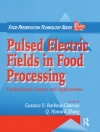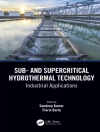This Brief presents comprehensive coverage of anthocyanins. The text covers the scientific literature and clinical significance of this Flavonoid sub-group, with a special focus on their therapeutic aspects. In focusing on secondary metabolites in plants, this work aims to cover the resulting therapeutic potential for humans by referencing the numerous herbal-derived substances which have been evaluated and the rapidly growing data on the interactions of anthocyanins with the microbiome.
Anthocyanins and Human Health: Biomolecular and therapeutic aspects covers all angles of biomolecular, in vitro and in vivo anthocyanins from their general chemical structure to their use as a coloring agent. The intake, metabolism and secretion of anthocyanins in the human body are covered in-depth, as are the biosynthetic pathways through which these compounds are synthesized in the natural system. Factors affecting stability and extraction are listed, and health related uses and biological activities are covered in great detail. Present and future trends in anthocyanins research are also presented.
Tabela de Conteúdo
Herbal-derived medicine.- Introduction to Anthocyanins.- Chemical structure of Anthocyanins.- Anthocyanins as coloring agents.- Anthocyanin absorption and metabolism.- Biosynthesis of Anthocyanins.- Factors affecting the stability of Anthocyanins.- Health related uses and biological activities.- Pyrano Anthocyanins, proanthocydins and anthocyadins.- Extraction of Anthocyanins.- Presents and future trends of anthocyanins.
Sobre o autor
Dr. Muhammad Riaz is an Assistant Professor in the Department of Pharmacy at Shaheed Benazir Bhutto University in Sheringal, Pakistan.
Professor Bashar Saad, Ph D is President of Al Qasemi at Academic College in Baga Algharbiya, Israel.
Dr. Muhammad Zia Ul Haq is a Senior Manager in the Office of Research Innovation and Commercialization at Lahore College for Women in Lahore, Pakistan.












